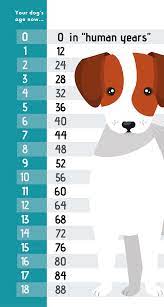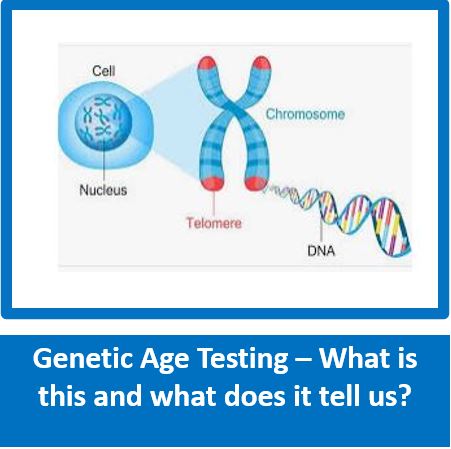|
The Genetic Age Test is designed to determine the biological age of your dog. Genetic or biological age is different than chronological or actual age in that genetic age gives insight into the predicted longevity of your dog from a cellular level. Very easy to do, and from the comfort of your home. Visit our website for more information and also find out about both our DNA testing to establish breed makeup, and our Allergy Kit. www.muttmix.co.za
|
How Old is Old? Comparing Dog Age to Human Age and How Complicated it Actually is!
By Ryan Llera, BSc, DVM; Lynn Buzhardt, DVM
www.vachospitals.com - a great website with multiple articles written by vets. VCA Hospitals are situated throughout the USA
By Ryan Llera, BSc, DVM; Lynn Buzhardt, DVM
www.vachospitals.com - a great website with multiple articles written by vets. VCA Hospitals are situated throughout the USA

You watch your young pup bounce across the lawn. You see your old dog lumber slowly to the food bowl. You take a brisk run with your young dog close at your heels. You slowly walk to the mailbox and your old dog still lags behind.
What a difference a few years make to your dog. You do not feel older, so why does your dog? Perhaps it is because what you and your dog consider “old” are vastly different. Comparing your human age to your furry friend’s canine age is rather complicated but, simply put, one year to Fido is not one year to you.
Doing the Math
The most common theory comparing human and canine ages uses this equation:
A dog’s age (in years) x 7 = Age in “dog years.”
For example, if your dog was born 7 years ago, he is 49 years old in “dog years.” (Or, stated differently, a 7-year old dog is at a similar stage in aging to a 49-year old human.)
This simple equation is only a rough estimate. A more accurate comparison of human vs. canine age takes into consideration the dog’s size and breed.
Smaller dogs age more slowly and have longer life spans. Larger dogs, in contrast, age more quickly and have shorter life spans. In addition, certain breeds enjoy more longevity than others. When comparing size, small Poodles live longer than huge Great Danes. But when comparing breed, Great Danes may outlive larger sized Bulldogs. The 7:1 ratio does not hold across the board.
"Dogs develop more quickly the first two years of life,
after which development levels out a bit."
Another factor that skews age calculation involves the rate of canine development. Dogs develop more quickly the first two years of life, after which development levels out a bit. During the first two years, one dog year equals about 10.5 human years. So, the dog: human aging ratios is 10.5:1 rather than 7:1. When a dog hits the three-year mark, he ages 4 years to every 1 human year bringing the ratio to 4:1. Using this formula, a 10-year old dog is the equivalent of a 53-year old human. Using the simple 7:1 ratio, this same 10-year old dog would be the equivalent of a 70-year old human.
All of these calculations are based on the assumption that the average human life expectancy in developed countries is 80 years. The average life span globally is only 66 years. So, the equations have to be altered according to geography. Complicated enough for you?
Simple Math Will Not Work
Complications in comparing dog age to human age are well founded. The old “7 dog years = 1 human year” theory is inaccurate, because the dog ages and develops more quickly the first two years of life. Plus, the ratio varies with dog breed and size. Even the more accepted equation utilizing the 10.5 factor the first two years of the dog’s life and 4 years thereafter has pitfalls, because it does not account for size and breed. The most accurate estimate of a dog’s age in human years is calculated taking size and breed into consideration. This method either categorizes dogs as small, medium, and large or more specifically uses their estimated adult weight.
So, what is the answer to the math problem?
Who knows? The easiest equation (7:1) is probably the least accurate. Formulas that take into consideration the faster development that occurs the first two years of life give a more accurate comparison. But even with this theory, there is variation. Some mathematicians feel that a 1-year old dog should be compared to a 10- to 15-year old human. The second year, as development levels out, should equate to 3 to 8 years of human aging. That would put a 2-year old dog on par with a 13- to 23-year old human. But that is still a big range. "
"What is consistent is the fact that dogs age more rapidly than their owners."In short, there is no definitive answer to the math problem. There is just too much variability in the canine community; there are too many breeds and too many sizes.
What is consistent is the fact that dogs age more rapidly than their owners and a 1-year old dog often resembles a gangly teenager. A 4-year old dog has the energy of a young adult, while a 9-year old dog walks with the stiff gait of a senior citizen.
Emotional Aging
To further complicate the issue, emotional maturity does not align with physical maturity. Emotional maturity occurs over an extended period of time. For example, a 21-year old human is considered an adult, but may not reach emotional maturity until age 40 or so; the same applies to dogs. Even though a 9-month old pup may be socially and sexually active, full maturity is not achieved until age 3 or 4. That is why 2-year old Labradors still chew your favorite slippers!
What is considered old for a dog?
For humans, some people consider 55-year olds to be senior citizens. Others delay imposing that status until 65 years. Canine senior status varies, too. Small dogs are considered senior citizens of the canine community when they reach 11-12 years of age. Their medium-sized friends become seniors at 10 years of age. Their larger-sized colleagues are seniors at 8 years of age. And, finally, their giant-breed counterparts are seniors at 7 years old. Therefore, a Great Dane becomes a senior citizen far earlier than a Pomeranian.
Like humans, dogs suffer the effects of aging. Some signs you may notice (regardless of what size dog you have) include:
What a difference a few years make to your dog. You do not feel older, so why does your dog? Perhaps it is because what you and your dog consider “old” are vastly different. Comparing your human age to your furry friend’s canine age is rather complicated but, simply put, one year to Fido is not one year to you.
Doing the Math
The most common theory comparing human and canine ages uses this equation:
A dog’s age (in years) x 7 = Age in “dog years.”
For example, if your dog was born 7 years ago, he is 49 years old in “dog years.” (Or, stated differently, a 7-year old dog is at a similar stage in aging to a 49-year old human.)
This simple equation is only a rough estimate. A more accurate comparison of human vs. canine age takes into consideration the dog’s size and breed.
Smaller dogs age more slowly and have longer life spans. Larger dogs, in contrast, age more quickly and have shorter life spans. In addition, certain breeds enjoy more longevity than others. When comparing size, small Poodles live longer than huge Great Danes. But when comparing breed, Great Danes may outlive larger sized Bulldogs. The 7:1 ratio does not hold across the board.
"Dogs develop more quickly the first two years of life,
after which development levels out a bit."
Another factor that skews age calculation involves the rate of canine development. Dogs develop more quickly the first two years of life, after which development levels out a bit. During the first two years, one dog year equals about 10.5 human years. So, the dog: human aging ratios is 10.5:1 rather than 7:1. When a dog hits the three-year mark, he ages 4 years to every 1 human year bringing the ratio to 4:1. Using this formula, a 10-year old dog is the equivalent of a 53-year old human. Using the simple 7:1 ratio, this same 10-year old dog would be the equivalent of a 70-year old human.
All of these calculations are based on the assumption that the average human life expectancy in developed countries is 80 years. The average life span globally is only 66 years. So, the equations have to be altered according to geography. Complicated enough for you?
Simple Math Will Not Work
Complications in comparing dog age to human age are well founded. The old “7 dog years = 1 human year” theory is inaccurate, because the dog ages and develops more quickly the first two years of life. Plus, the ratio varies with dog breed and size. Even the more accepted equation utilizing the 10.5 factor the first two years of the dog’s life and 4 years thereafter has pitfalls, because it does not account for size and breed. The most accurate estimate of a dog’s age in human years is calculated taking size and breed into consideration. This method either categorizes dogs as small, medium, and large or more specifically uses their estimated adult weight.
So, what is the answer to the math problem?
Who knows? The easiest equation (7:1) is probably the least accurate. Formulas that take into consideration the faster development that occurs the first two years of life give a more accurate comparison. But even with this theory, there is variation. Some mathematicians feel that a 1-year old dog should be compared to a 10- to 15-year old human. The second year, as development levels out, should equate to 3 to 8 years of human aging. That would put a 2-year old dog on par with a 13- to 23-year old human. But that is still a big range. "
"What is consistent is the fact that dogs age more rapidly than their owners."In short, there is no definitive answer to the math problem. There is just too much variability in the canine community; there are too many breeds and too many sizes.
What is consistent is the fact that dogs age more rapidly than their owners and a 1-year old dog often resembles a gangly teenager. A 4-year old dog has the energy of a young adult, while a 9-year old dog walks with the stiff gait of a senior citizen.
Emotional Aging
To further complicate the issue, emotional maturity does not align with physical maturity. Emotional maturity occurs over an extended period of time. For example, a 21-year old human is considered an adult, but may not reach emotional maturity until age 40 or so; the same applies to dogs. Even though a 9-month old pup may be socially and sexually active, full maturity is not achieved until age 3 or 4. That is why 2-year old Labradors still chew your favorite slippers!
What is considered old for a dog?
For humans, some people consider 55-year olds to be senior citizens. Others delay imposing that status until 65 years. Canine senior status varies, too. Small dogs are considered senior citizens of the canine community when they reach 11-12 years of age. Their medium-sized friends become seniors at 10 years of age. Their larger-sized colleagues are seniors at 8 years of age. And, finally, their giant-breed counterparts are seniors at 7 years old. Therefore, a Great Dane becomes a senior citizen far earlier than a Pomeranian.
Like humans, dogs suffer the effects of aging. Some signs you may notice (regardless of what size dog you have) include:
- Loss of vision
- Loss of hearing
- Weight gain
- Loss of energy
- Arthritis and other joint problems
- Loss of muscle tone
- Loss of teeth
- Loss of organ integrity (heart, liver, kidneys)
- Loss of skin elasticity
- Loss of hair
- Loss of immunity
- Loss of mental acuity





